Emergent Properties
- Multicellular organisms are able to undertake functions that unicellular organisms cannot, e.g. move over vast distances and digest large macromolecules
- This is a result of properties emerging when individual cells organise and interact to produce living organisms
- Scientists sometimes summarise this with the phrase "The whole is greater than the sum of its parts"
- Traditionally, scientists have approached the study of biology from a reductionist perspective, looking at the individual cells, however, due to emergent properties there is an argument that the systems approach should be used
The organisation of multicellular organisms
- In multicellular organisms, specialised cells of the same type group together to form tissues
- A tissue is a group of cells that work together to perform a particular function. For example:
- Epithelial cells group together to form epithelial tissue (the function of which, in the small intestine, is to absorb food)
- Muscle cells (another type of specialised cell) group together to form muscle tissue (the function of which is to contract in order to move parts of the body)
- Different tissues work together to form organs. For example:
- The heart is made up of many different tissues (including cardiac muscle tissue, blood vessel tissues and connective tissue, as well as many others)
- Different organs work together to form organ systems
- Organ systems work together to carry out the life functions of a complete organism
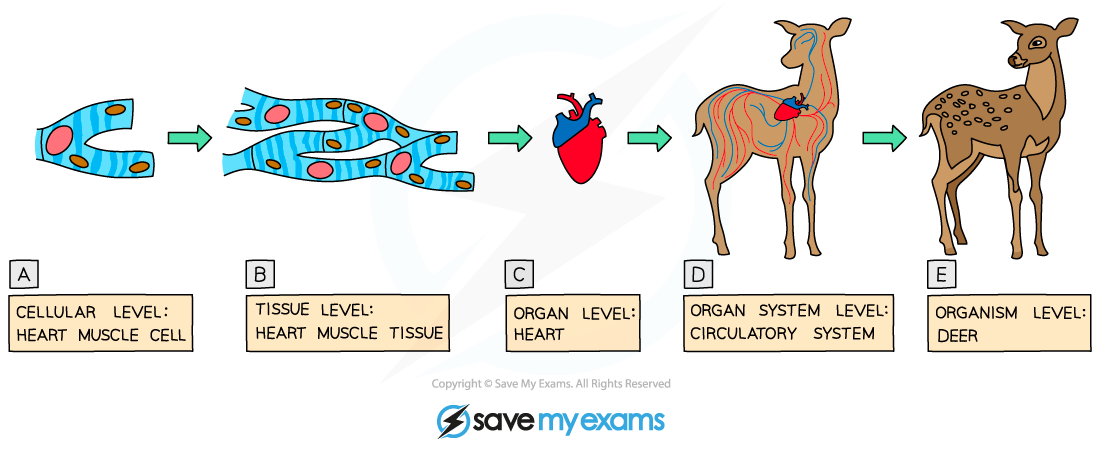
The organisation of multicellular organisms
Levels of Organisation in Humans Table
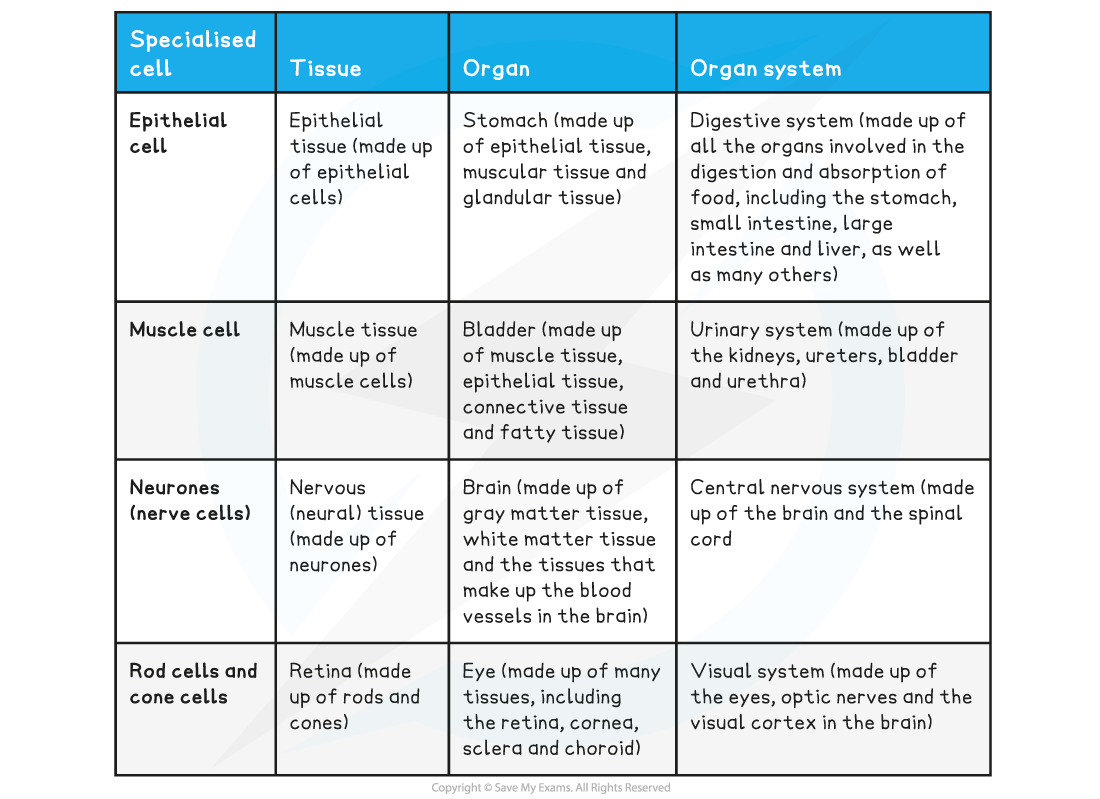
Cell Differentiation
- In complex multicellular organisms eukaryotic cells become specialised for specific functions. This can also be referred to as the division of labour
- Specialisation enables the cells in a tissue to function more efficiently as they develop specific adaptations for that role. The development of these distinct specialised cells occurs by differentiation
- These specialised eukaryotic cells have specific adaptations to help them carry out their functions
- For example, the structure of a cell is adapted to help it carry out its function (this is why specialised eukaryotic cells can look extremely different from each other)
- Structural adaptations include:
- The shape of the cell
- The organelles the cell contains (or doesn’t contain)
- For example:
- Cells that make large amounts of proteins will be adapted for this function by containing many ribosomes (the organelle responsible for protein production)
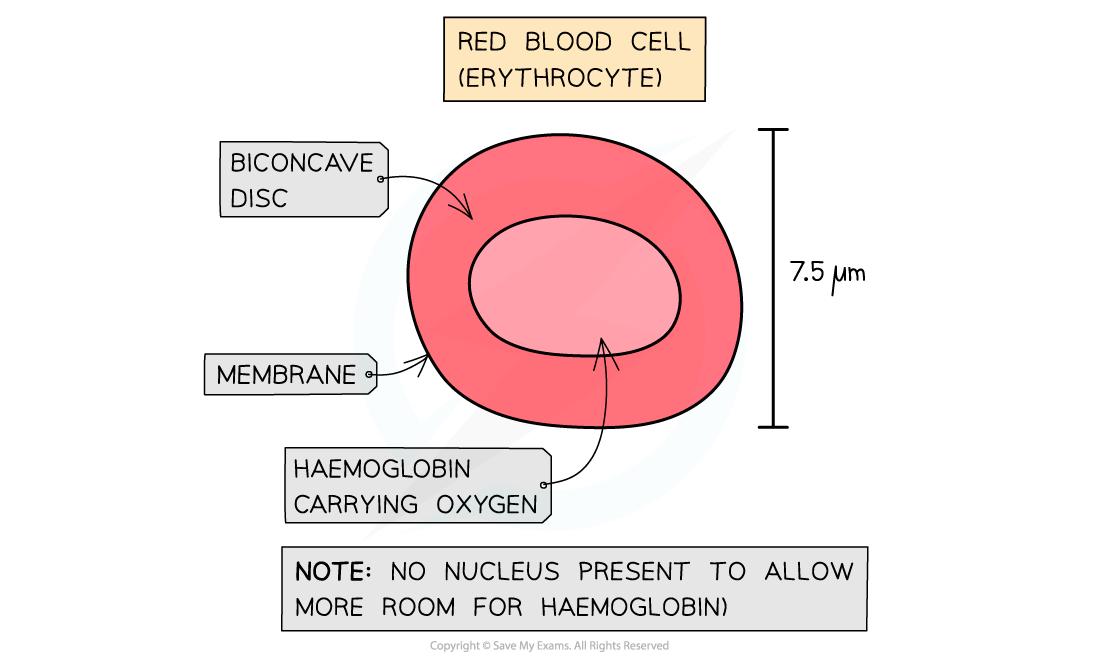
The biconcave shape of erythrocytes increases the surface area available for oxygen absorption
Gene Expression
- Every nucleus within the cells of a multicellular organism contains the same genes, that is, all cells of an organism have the identical genome
- Despite cells having the same genome, they have a diverse range of functions because during differentiation certain genes are expressed ('switched' on)
- Controlling gene expression is the key to development as the cells differentiate due to the different genes being expressed
- Once certain genes are expressed the specialisation of the cell is usually fixed so the cell cannot adapt to a new function

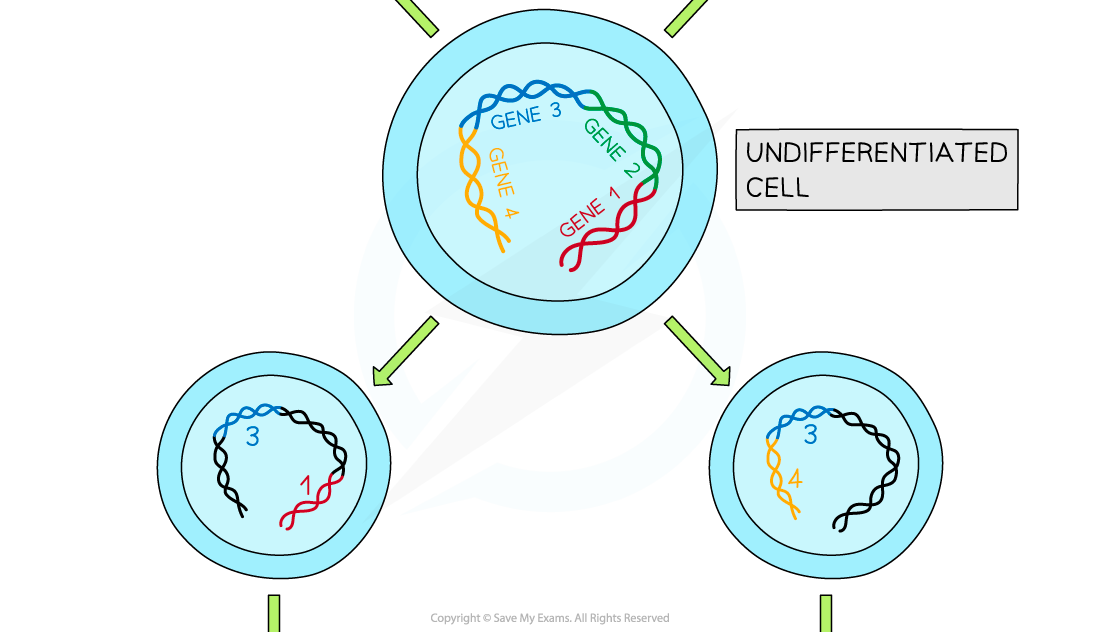
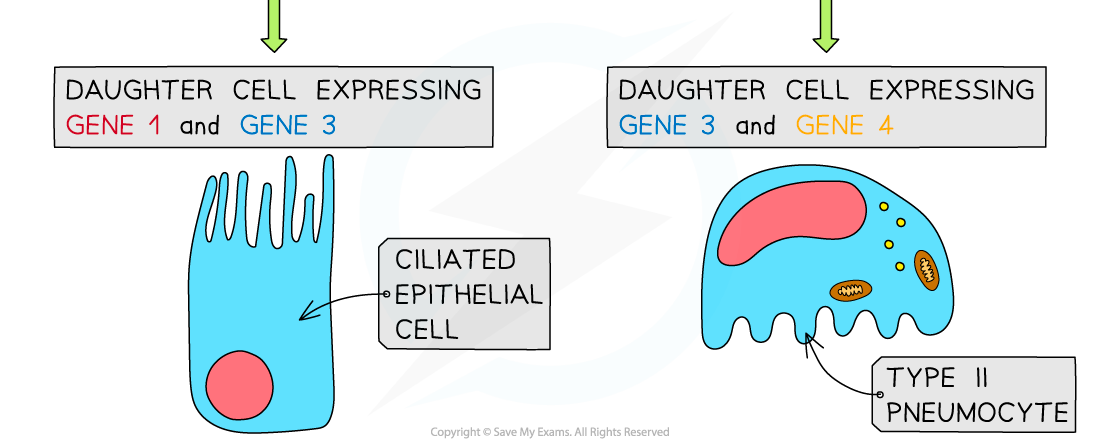
Expression of genes resulting in cell differentiation
Exam Tip
It’s important to start learning some biological examples of each of these levels of organisation. Try and start with an organ system, such as the circulatory system or nervous system, and work your way down the levels of organisation noting down examples of organs, tissues and specialised cells as you go! Alternatively, start with a specialised cell you know of, such as a red blood cell, and work your way up the levels of organisation until you reach an organ system.